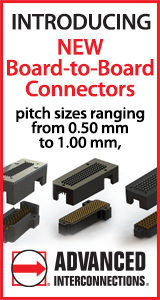|

|
Analysis to Predict Deformation and Warpage of Optoelectronics Package Lids
Analysis Lab |
|
Authored By:Nupur Bajad, V. Venkatadri Analog Devices, Inc. MA, USA D.L. Santos, K. Hari Srihari Watson Institute for Systems Excellence Systems Science and Industrial Engineering Department Binghamton University – State University of New York NY, USA SummaryA design of experiment (DOE) analysis is reported on data from warpage simulations using finite element analysis (FEA) of a lidded electronics package. Warpage in a lid of an optical electronics package can detrimentally affect the reliability of the package as well as its optical performance. The present study focuses on the variety of materials and designs of lids relevant to recent technologies in electronics packaging. The FEA formulation in this study accurately predicts deformation and warpage in the elastic region with optimal computational time achieved through a choice of boundary conditions and mesh sensitivity studies. This study mainly focuses on how warpage is affecting the lid deformation and techniques to characterize it. FEA is used to create a prototype which is similar to the actual product. The experiment is designed considering different variables such as both the design and the material of the lid. DOE and subsequent statistical analyses are applied to understand the correlation between these parameters. The most significant parameter in terms of the warpage deformation is addressed. Based on this study, the appropriate design and material are suggested for the development of the lid over the package. This becomes helpful when there is an optoelectronic package undergoing thermomechanical loading; warpage may not only adversely affect solder joints but other parts of the package as well. So, in this work, characterization of the lid of the package affected by warpage is the focus area. The analysis indicates that there is no significant interaction between the two parameters expected to affect the warpage in the lid. Material properties of the lid are found to have a greater effect on the warpage of the lid as compared to variabilities introduced in lid designs in this study. This study will be helpful for the development of technologically advanced packages associated with optoelectronics. ConclusionsAfter applying both analytical methods successfully on three layer assembly of the package and comparing it with FEA simulation, FEA results seems more accurate. Assumption made based on the literature survey are correct. The DOE analysis shows that there is no significant interaction between the two independent variables considered such as material of the lid and design of the lid. If results are analyzed considering only the lid design variable, then it might be said that, as the curvature of the lid becomes smooth, warpage deformation reduces. It is also observed that type of material plays a more significant role in warpage deformation of the lid than the shape of the lid. In this simulation study, elastic material properties considered for the package such as Young’s modulus, Poisson’s ratio and CTE. Out of these three material properties, CTE should be more compliant to other layers in the package in order to reduce warpage. Experimental procedures to measure warpage may prove more accurate than analytical and numerical methods when actual prototypes are developed, since ultimate strength and plastic behavior of the material will be tested while thermal loading conditions are applied. However, as thermal loading will be accelerated, plastic deformations due to fatigue and creep will account more accurately for reliability in real life conditions. This is difficult to achieve by FEA tools or analytical tools. So experimental procedure of measuring this parametric study is important in future work to gain more accurate predictions. Initially Published in the SMTA Proceedings |
|
Comments
|
|
|
|
|


